Team members

Alberto BACCI
DR CNRS & Team Leader
Alberto BACCI
DR CNRS & Team Leader
Biography
- 1994: Masters’ Degree in Biological Sciences, Dept. of Physiology, University of Milano (Italy) – Ion channels and excitability of cortical neurons
- 2000: Ph.D., Dept. of Pharmacology, University of Milano (Italy) – cellular and molecular mechanisms underlying formation of synapses; modulation of synaptogenesis and synaptic function by astrocytes
- 1999 – 2005: Postdoctoral Fellow and Staff Scientist, Dept. of Neurology at Stanford University (USA) – Physiology of cortical circuits
- 2005 – 2011: Group Leader, European Brain Research Institute, Rome (Italy)
- 2011 – Present: DR CNRS and Team Leader, ICM – Institut du Cerveau | Paris Brain Institute; Sorbonne Université, CNRS, INSERM, Paris (France)

Joana LOURENÇO
PhD, CR Inserm
Joana LOURENÇO
Principal investigator, PhD, CR, INSERM
Biography
- 2006 – 2010: Ph.D. in Cellular Biology with full credits and honours from the University of Coimbra, Portugal
- 1999 – 2004: Biology degree with the classification of good from the University of Coimbra, Portugal
Research work
In the neocortex, sensory perception is achieved by a two-way communication between primary and associative cortices and is controlled by a rich diversity of GABAergic interneurons. In particular, perisomatic-targeting basket cells (BCs) form inhibitory synapses near the soma of the principal neurons (PNs). Plasticity of perisomatic inhibition mediated by parvalbumin (PV) interneurons can efficiently modulate the firing of PNs (Lourenço et al., 2014; 2020). Perisomatic inhibition, however, is not solely provided by PV interneurons but also by cholecystokinin (CCK)-expressing interneurons, which also express high levels of cannabinoid receptor type 1 (CB1). Yet, the function of this cell type within cortical circuits is elusive. Whether and how inhibition arising from CB1 basket cells can shape sensory information processing is a question that we are trying to tackle using a multidisciplinary approach. Understanding how different sources of perisomatic inhibition along with different neuromodulators shape PNs activity in vivo is at the center of my scientific interests.

Kathleen CHO
PhD, CR Inserm

Andrea AGUIRRE
Lab Manager, Ingénieure d’études
Andrea AGUIRRE
Lab manager
Biography
- 2009 – 2012: Masters’ Degree (M2): “Biologie Intégrative: Physiologie et Neurosciences, Spécialité Neurosciences”. Mention: AB; Université Claude Bernard Lyon 1 (UCBL); Lyon, France
Professional experiences:
- July 2014 – Present: Ingénieur d’études, CDI. ICM, Paris; Team: “Cellular Physiology of Cortical Microcircuits” (Dr. Alberto Bacci)
- March 2013 – June 2014: Cadre, CDD. Centre de recherche de neurosciences de Lyon, Lyon. Team: “Waking” (Dr. Jian-Sheng Lin)
- Sept. 2012 – Feb. 2013: Ingénieur d’études, CDD. Centre de recherche de neurosciences de Lyon, Lyon. Team: “Waking” (Dr. Laurent Seugnet)
Skill
- Surgical expertise: stereotaxic injections, in utero electroporation, monocular deprivation
- Anatomy and imaging : confocal, apotome. FIJI
- Wetlab expertise: freezing microtome, vibratome, IHC on floating slice

Ignat LAPATO-ZAHORSKI
Ingénieur d’études

Valentin RITOU
PostDoc, PhD
Valentin RITOU
Postdoctorant, PhD
Biography
I completed my undergraduate studies (2016–2019) in Biology and Neurosciences at the University of Bordeaux (France) and the University of Kyoto (Japan). My interest in neurodevelopment deepened during an internship in the Kageyama Laboratory at the Institute for Frontier Life and Medical Sciences, Kyoto University. I earned my master’s degree (2019–2021) in Neurosciences at Université Paris-Cité, where I conducted research in Valérie Voon's laboratory. My work focused on the effects of transcranial magnetic stimulation and deep-brain stimulation on cognitive flexibility and plasticity.
For my doctoral research (2021–2024), undertaken in the Glia-Glia and Glia-Neuron Interactions Group at Université Paris-Cité under the supervision of Cendra Agulhon, I explored the effects of chronic astrocyte GPCR signaling during the critical period of the primary visual cortex (V1). My research examined the impact of such aberrant astrocyte activation on synaptic transmission and plasticity, with implications for neurodevelopmental disorders such as autism spectrum disorder and schizophrenia. Throughout my PhD, I developed expertise in motor and social behavior assays, juvenile stereotaxic surgery, viral injections, in vivo electrophysiology, synapse quantification, confocal imaging, 3D quantification, Python programming, and big data analysis and management.
Currently, I am a postdoctoral researcher in the Bacci Lab. My project focuses on understanding the role of inhibitory circuits in Down syndrome, leveraging advanced methodologies such as in vivo Neuropixels recordings and opto-tagging.

Nina SOTO
PhD student
Nina SOTO
PhD candidate
Biography

Adrianna NOZOWNIK
PhD student
Adrianna NOZOWNIK
PhD student
Biography
During my Masters in Biology, obtained in 2021 from University of Hamburg in Germany, I worked in Simon Wiegert’s lab. Since May 2022 I moved not only from Hamburg to Paris, but also from characterizing inhibitory optogenetic tools to characterizing inhibitory interneurons in Alberto Bacci’s lab. The idea behind the project is to understand better the integration of contextual information with visual information which is a process to create perception. For this, I investigate the properties of cortical Layer 1 interneurons that express the Cannabinoid receptor Type-1 and the associated plasticity and microcircuit to assess their putative role in gating inputs onto pyramidal cells of the primary visual cortex. Using in vitro electrophysiology, in vivo two-photon imaging and recording of spontaneous behaviors, I aim to characterize this CB1 positive population within the diverse types of Layer 1 interneurons and their contribution to primary visual cortex activity during the perception of visual inputs.

Faezeh RABBANI
Ingénieure d’études
Faezeh RABBANI
Ingenieur d’études
I studied Cellular Molecular Biology at the University of Tehran, Iran. After joining Rodent Electrophysiology Laboratory at the Institute for Research In Fundamental Sciences (IPM) as a research assistant, I decided to study for My master's in Computational Neuroscience. To this aim, I joined the CNN master's program at Paris Saclay university. I did my master's project on Cortical mechanisms of sensorimotor learning using a deep-learning framework on the electrophysiology data from a closed-loop BMI setup at the NeuroPSI institute under the supervision of Valerie ego Stengel. Now, I am currently a data engineer in Alberto Bacci's team at the Paris Brain Institute.

Killian ABRASSART
PhD student
Killian ABRASSART
PhD Student
I earned my Master's degree in Biology with a specialization in Cellular and Integrative Neuroscience in 2023 from Sorbonne University in Paris. During this period, I worked with Véronique Marchand-Pauvert to identify a biomarker related to Amyotrophic Lateral Sclerosis (ALS). This experience motivated me to transition from pre-clinical to more fundamental research. As part of my Ph.D. program, I am investigating how the endogenous presence or absence of perineuronal nets (PNN) expression around parvalbumin-positive (PV) cells in two adjacent visual cortical regions, V1 and V2m, can confer distinct electrophysiological properties. My research project will involve ex-vivo electrophysiological recordings with electrical and optogenetic thalamocortical stimulations, immunohistochemistry, and in-vivo recording.

Nathan MALLET
PhD student
Nathan MALLET
PhD student
I studied in the Biology Department at ENS Paris-Saclay from 2019 to 2023. In 2022, I obtained my master's degree at Sorbonne in Integrative Biology and Physiology with a focus on neuroscience. For my master's internship, I worked in Rebecca Piskorowski's and Vivien Chevaleyre's lab, using slice electrophysiology to study synaptic plasticity in area CA2 of the hippocampus. With the goal of expanding my skills in the in vivo field, I then joined the Sabatini lab at Harvard Medical School, where I used fiber photometry to measure changes in dopamine release during adolescence in mice. In September 2023, I joined the Bacci lab as a PhD student. I study the role of a subpopulation of VIP interneurons expressing the Cannabinoid receptor Type 1 in the V1 cortex. This subpopulation could be crucial in generating spontaneous activity in this area, such as activity induced by locomotion or arousal. Combining my previous experiences with in vivo and in vitro techniques, my project involves ex vivo electrophysiology and in vivo calcium imaging.

Mai-An NGUYEN
Ingénieure d’études
Mai-An NGUYEN
Ingénieur d’études

Alejandro CARBALLOSA
PostDoc, PhD
Alejandro CARBALLOSA
PostDoc, PhD
Biography
- 2014-2018: BS in Physics at the University of Santiago de Compostela, Spain
- 2018-2019: MSc in Complex Systems’ modelling at the Autonomous University of Barcelona, Spain
- 2019-2023: PhD Cum Laude in Complex Systems and Networks from the University of Santiago de Compostela, Spain
Current work
Since February 2024, I am a postdoctoral researcher at the Laboratoire de Physique Théorique et Modélisation (LPTM) under the scientific supervision of prof. Alessandro Torcini in collaboration with prof. Alberto Bacci at Bacci’s Lab. My current research interest cover the development of nonlinear indicators to analyze the brain’s complexity, using for that purpose both experimental data-driven approaches and computational models of neural activity.

Killian ABRASSART
PhD student
Killian ABRASSART
PhD Student
I earned my Master's degree in Biology with a specialization in Cellular and Integrative Neuroscience in 2023 from Sorbonne University in Paris. During this period, I worked with Véronique Marchand-Pauvert to identify a biomarker related to Amyotrophic Lateral Sclerosis (ALS). This experience motivated me to transition from pre-clinical to more fundamental research. As part of my Ph.D. program, I am investigating how the endogenous presence or absence of perineuronal nets (PNN) expression around parvalbumin-positive (PV) cells in two adjacent visual cortical regions, V1 and V2m, can confer distinct electrophysiological properties. My research project will involve ex-vivo electrophysiological recordings with electrical and optogenetic thalamocortical stimulations, immunohistochemistry, and in-vivo recording.

Nathan MALLET
PhD student
Nathan MALLET
PhD student
I studied in the Biology Department at ENS Paris-Saclay from 2019 to 2023. In 2022, I obtained my master's degree at Sorbonne in Integrative Biology and Physiology with a focus on neuroscience. For my master's internship, I worked in Rebecca Piskorowski's and Vivien Chevaleyre's lab, using slice electrophysiology to study synaptic plasticity in area CA2 of the hippocampus. With the goal of expanding my skills in the in vivo field, I then joined the Sabatini lab at Harvard Medical School, where I used fiber photometry to measure changes in dopamine release during adolescence in mice. In September 2023, I joined the Bacci lab as a PhD student. I study the role of a subpopulation of VIP interneurons expressing the Cannabinoid receptor Type 1 in the V1 cortex. This subpopulation could be crucial in generating spontaneous activity in this area, such as activity induced by locomotion or arousal. Combining my previous experiences with in vivo and in vitro techniques, my project involves ex vivo electrophysiology and in vivo calcium imaging.
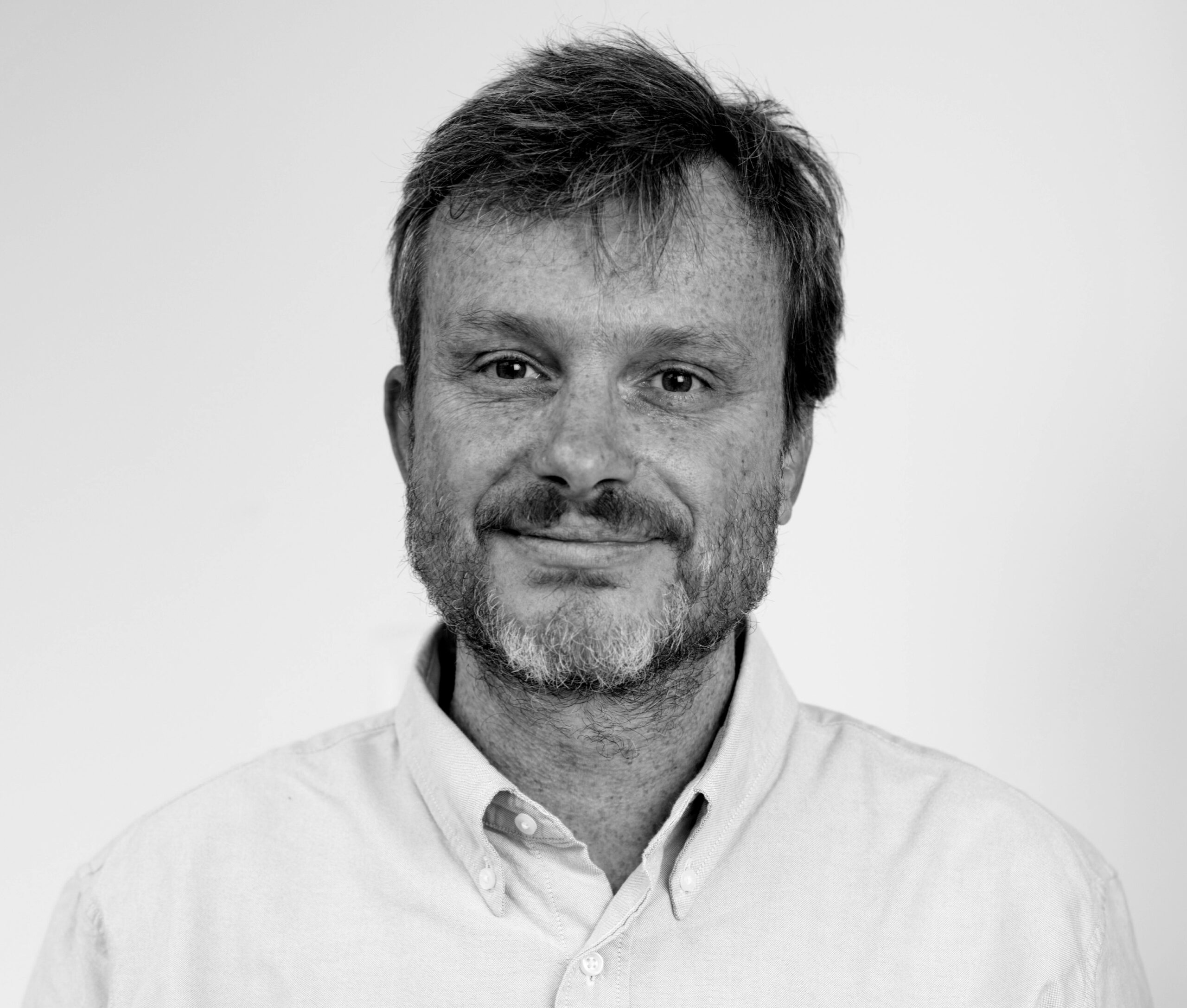
Alberto BACCI
DR CNRS & Team Leader
Alberto BACCI
DR CNRS & Team Leader
Biography
- 1994: Masters’ Degree in Biological Sciences, Dept. of Physiology, University of Milano (Italy) – Ion channels and excitability of cortical neurons
- 2000: Ph.D., Dept. of Pharmacology, University of Milano (Italy) – cellular and molecular mechanisms underlying formation of synapses; modulation of synaptogenesis and synaptic function by astrocytes
- 1999 – 2005: Postdoctoral Fellow and Staff Scientist, Dept. of Neurology at Stanford University (USA) – Physiology of cortical circuits
- 2005 – 2011: Group Leader, European Brain Research Institute, Rome (Italy)
- 2011 – Present: DR CNRS and Team Leader, ICM – Institut du Cerveau | Paris Brain Institute; Sorbonne Université, CNRS, INSERM, Paris (France)
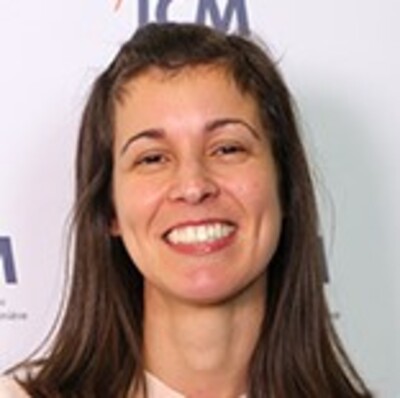
Joana LOURENÇO
PI, PhD, CR2, Inserm
Joana LOURENÇO
Principal investigator, PhD, CR2, INSERM
Biography
- 2006 – 2010: Ph.D. in Cellular Biology with full credits and honours from the University of Coimbra, Portugal
- 1999 – 2004: Biology degree with the classification of good from the University of Coimbra, Portugal
Research work
In the neocortex, sensory perception is achieved by a two-way communication between primary and associative cortices and is controlled by a rich diversity of GABAergic interneurons. In particular, perisomatic-targeting basket cells (BCs) form inhibitory synapses near the soma of the principal neurons (PNs). Plasticity of perisomatic inhibition mediated by parvalbumin (PV) interneurons can efficiently modulate the firing of PNs (Lourenço et al., 2014; 2020). Perisomatic inhibition, however, is not solely provided by PV interneurons but also by cholecystokinin (CCK)-expressing interneurons, which also express high levels of cannabinoid receptor type 1 (CB1). Yet, the function of this cell type within cortical circuits is elusive. Whether and how inhibition arising from CB1 basket cells can shape sensory information processing is a question that we are trying to tackle using a multidisciplinary approach. Understanding how different sources of perisomatic inhibition along with different neuromodulators shape PNs activity in vivo is at the center of my scientific interests.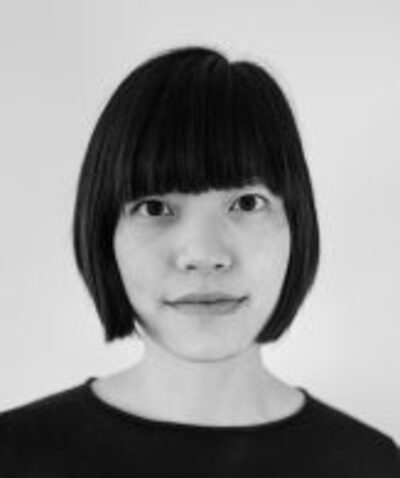
Kathleen CHO
PI, PhD, CR1, Inserm

Laurence CATHALA
PI, PhD, MCU, Sorbonne Uni.
Laurence CATHALA
PI, PhD, MCU, Sorbonne Uni.
Biography
- 2006 – 2010: Ph.D. in Cellular Biology with full credits and honours from the University of Coimbra, Portugal
- 1999 – 2004: Biology degree with the classification of good from the University of Coimbra, Portugal
Research work
In the neocortex, sensory perception is achieved by a two-way communication between primary and associative cortices and is controlled by a rich diversity of GABAergic interneurons. In particular, perisomatic-targeting basket cells (BCs) form inhibitory synapses near the soma of the principal neurons (PNs). Plasticity of perisomatic inhibition mediated by parvalbumin (PV) interneurons can efficiently modulate the firing of PNs (Lourenço et al., 2014; 2020). Perisomatic inhibition, however, is not solely provided by PV interneurons but also by cholecystokinin (CCK)-expressing interneurons, which also express high levels of cannabinoid receptor type 1 (CB1). Yet, the function of this cell type within cortical circuits is elusive. Whether and how inhibition arising from CB1 basket cells can shape sensory information processing is a question that we are trying to tackle using a multidisciplinary approach. Understanding how different sources of perisomatic inhibition along with different neuromodulators shape PNs activity in vivo is at the center of my scientific interests.
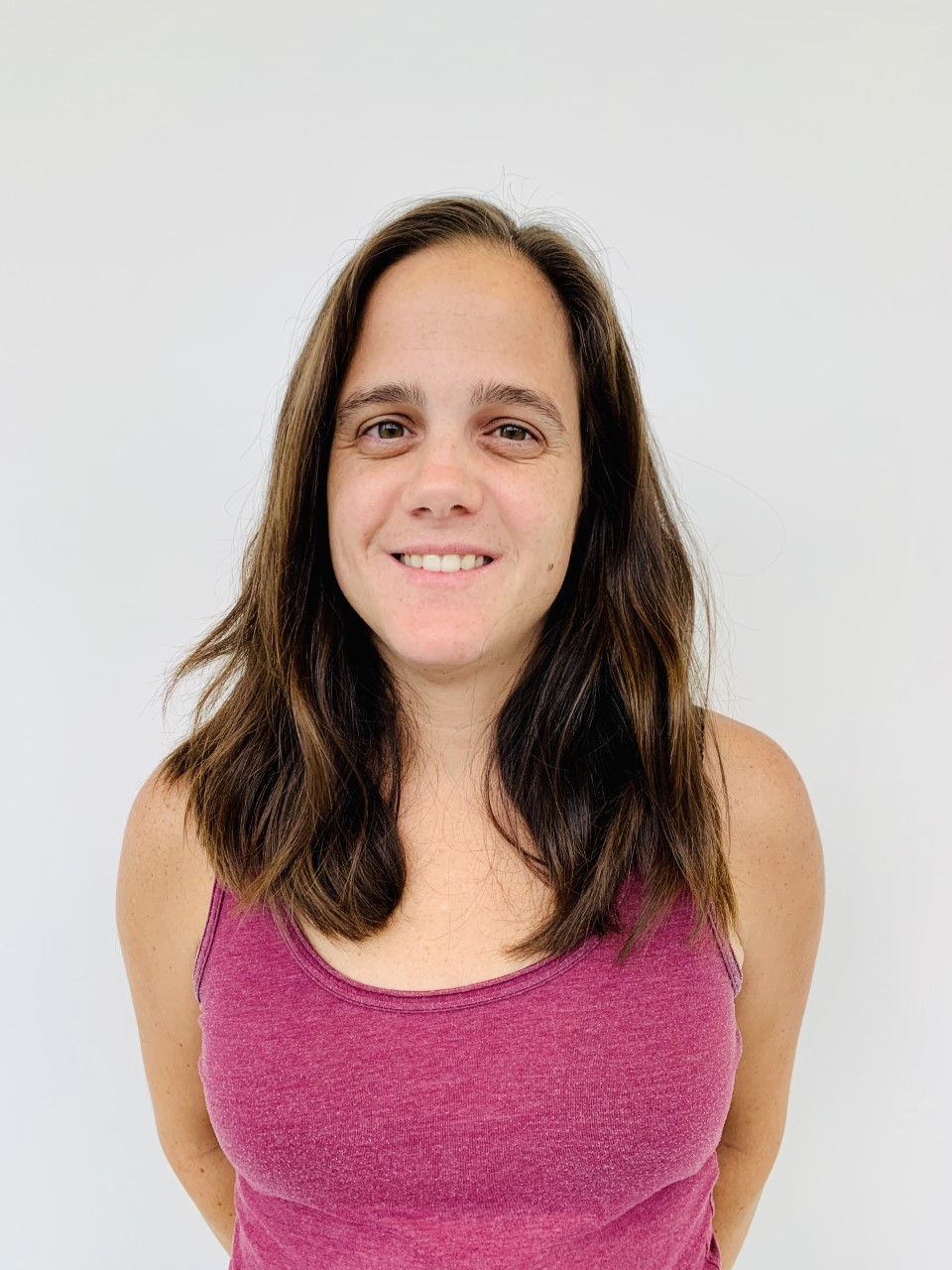
Andrea AGUIRRE
Lab manager
Andrea AGUIRRE
Lab manager
Biography
- 2009 – 2012: Masters’ Degree (M2): “Biologie Intégrative: Physiologie et Neurosciences, Spécialité Neurosciences”. Mention: AB; Université Claude Bernard Lyon 1 (UCBL); Lyon, France
Professional experiences:
- July 2014 – Present: Ingénieur d’études, CDI. ICM, Paris; Team: “Cellular Physiology of Cortical Microcircuits” (Dr. Alberto Bacci)
- March 2013 – June 2014: Cadre, CDD. Centre de recherche de neurosciences de Lyon, Lyon. Team: “Waking” (Dr. Jian-Sheng Lin)
- Sept. 2012 – Feb. 2013: Ingénieur d’études, CDD. Centre de recherche de neurosciences de Lyon, Lyon. Team: “Waking” (Dr. Laurent Seugnet)
Skill
- Surgical expertise: stereotaxic injections, in utero electroporation, monocular deprivation
- Anatomy and imaging : confocal, apotome. FIJI
- Wetlab expertise: freezing microtome, vibratome, IHC on floating slice

Javier ZORRILLA DE SAN MARTIN
PostDoc, PhD
Javier ZORRILLA DE SAN MARTIN
PostDoc, PhD
Education
- 2012: PhD in Biological Sciences - Instituto de Ingenieria Genetica y Biologia Molecular. INGEBI-CONICET. Facultad de Ciencias Exactas y Naturales, Universidad de Buenos Aires, Argentina.
- 2007: Licenciatura en Ciencias Biologicas - Facultad de Ciencias Exactas y Naturales, Universidad de Buenos Aires, Argentina.
Biography
- 2006 – 2007: Undergrad - “Auditory Physiology & Genetics” team - Instituto de Investigaciones en Ingeniería Genética y Biología Molecular INGEBI-CONICET.
- 2007 – 2012: PhD - “Auditory Physiology & Genetics” team. Instituto de Investigaciones en Ingeniería Genética y Biología Molecular INGEBI-CONICET.
- 2012 – 2016: Postdoctoral fellow “Brain Physiology Laboratory” – Université Paris Descartes.
- 2016 – Present: Postdoctoral fellow “Cellular physiology of cortical microcircuits” team. Paris Brain Institut – ICM.
Research
Trained in the biophysics of neuronal and synaptic physiology I study alterations of cortical neural circuits and their relationships with intellectual deficits in mouse models of Down syndrome.
Teaching
- 2013 – 2019: Teacher at the “Microelectrode Techniques for Cell Physiology Workshop”. Marine Biological Association, Citadel Hill, Plymouth, UK.
- 2013 – 2022: Teacher at the “Paris Neuroscience School: Optical Imaging and Electrophysiological Recording in Neuroscience”.

Angela DE STASI
PostDoc, PhD
Angela Michela DE STASI
Postdoctorant, PhD
Biography
Keywords
Research interests

Fani KOUKOULI
PostDoc
Fani KOUKOULI
PostDoc
Education
- 2016: PhD in Neuroscience - International Pasteur Paris University Doctoral Program (PPU)/Department of Neuroscience, Sorbonne University (UPMC, Ed3C), Paris, France.
- 2011: Master’s in biotechnology/Molecular Diagnosis, Aristotle University of Thessaloniki, School of Pharmacy, Thessaloniki, Greece
- 2009: Doctor of Pharmacy, Aristotle University of Thessaloniki, School of Pharmacy, Thessaloniki, Greece
Biography
I graduated as a Doctor of Pharmacy from the Aristotle University of Thessaloniki, where I then got a Master of Science in Biotechnology and Molecular Diagnosis specializing in neurodegenerative diseases. In 2012, I was admitted with a fellowship to the Pasteur Paris University International Doctoral Program (PPU) in the Integrative Neurobiology of Cholinergic Systems laboratory. During my PhD, I investigated the role of the nicotinic acetylcholine receptors in prefrontal cortex spontaneous neuronal activity, and I identified how a human polymorphism linked to nicotine addiction and schizophrenia contributes to reduced brain activity (Koukouli et al. Nature Medicine 2017). During a first post-doctoral training at the Pasteur Institute, I focused on the impairments of the functional neuronal activity in Alzheimer’s disease and showed that distinct nicotinic receptors are an early target of the amyloid beta peptide. Since 2019, I am a senior post-doc at the Paris Brain Institute (ICM) in the team “Cellular physiology of cortical microcircuits”. My research focuses on the role of an elusive inhibitory neuron type, cannabinoid receptor type 1 interneurons, in primary and secondary cortices and their role in locomotion and visual processing (Koukouli, Montmerle et al. Cell Reports 2022). For my projects, I am performing in vivo two-photon calcium imaging in awake mice and slice electrophysiology techniques. For my research, I received the thesis award “Gandy” specializing in Science of the Chancellery of the Sorbonne Universities of Paris in 2017, the Biomedical Science Research award UNAFAM 2017 from the French Ministry of Health in Paris, the L’Oréal-UNESCO for Women in Science award in 2017 and recently the Young Scientists Prize 2020 of the Fondation des Treilles.
Nina SOTO
PhD student
Nina SOTO
PhD candidate
Biography
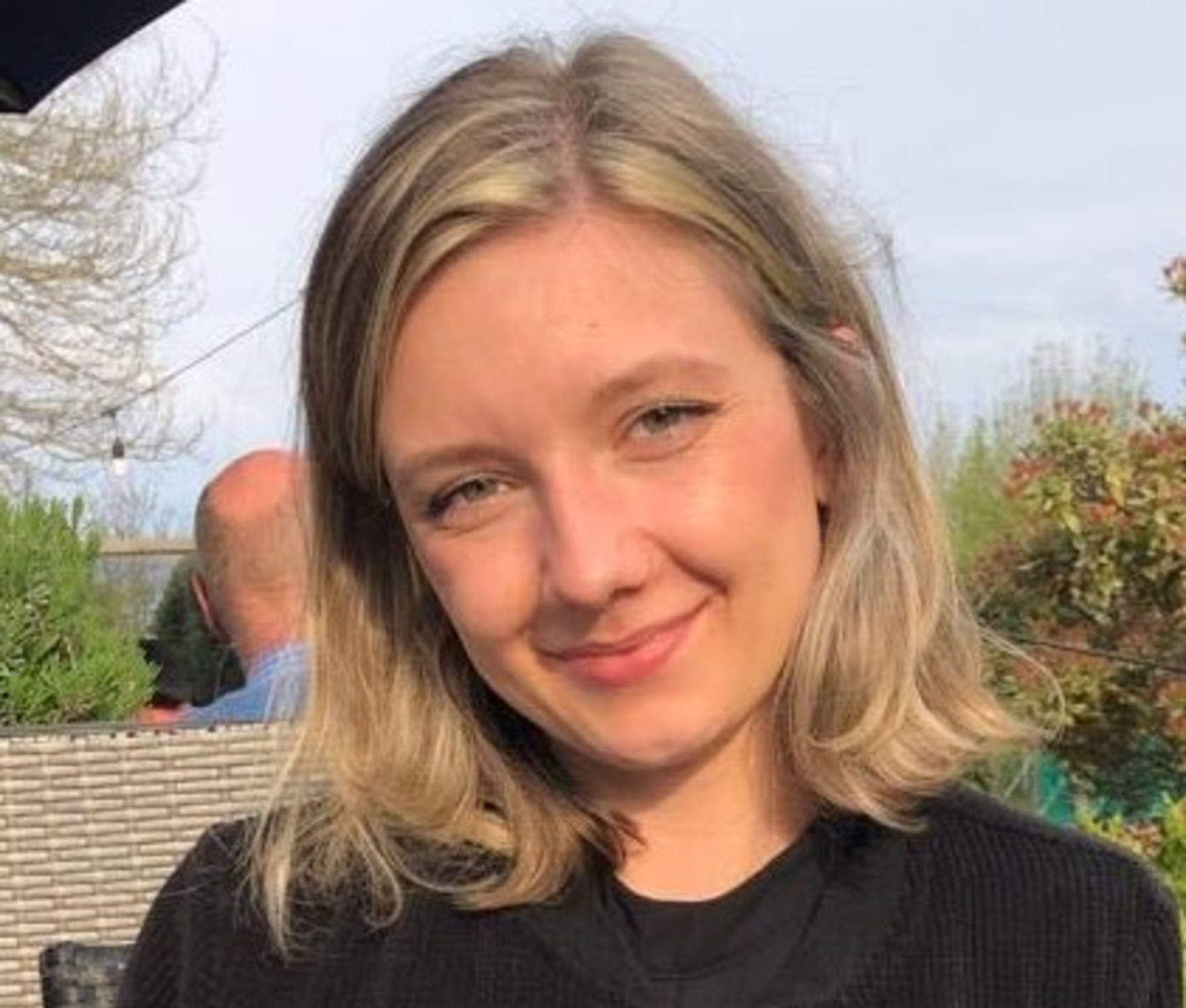
Adrianna NOZOWNIK
PhD student
Adrianna NOZOWNIK
PhD student
Biography
During my Masters in Biology, obtained in 2021 from University of Hamburg in Germany, I worked in Simon Wiegert’s lab. Since May 2022 I moved not only from Hamburg to Paris, but also from characterizing inhibitory optogenetic tools to characterizing inhibitory interneurons in Alberto Bacci’s lab. The idea behind the project is to understand better the integration of contextual information with visual information which is a process to create perception. For this, I investigate the properties of cortical Layer 1 interneurons that express the Cannabinoid receptor Type-1 and the associated plasticity and microcircuit to assess their putative role in gating inputs onto pyramidal cells of the primary visual cortex. Using in vitro electrophysiology, in vivo two-photon imaging and recording of spontaneous behaviors, I aim to characterize this CB1 positive population within the diverse types of Layer 1 interneurons and their contribution to primary visual cortex activity during the perception of visual inputs.
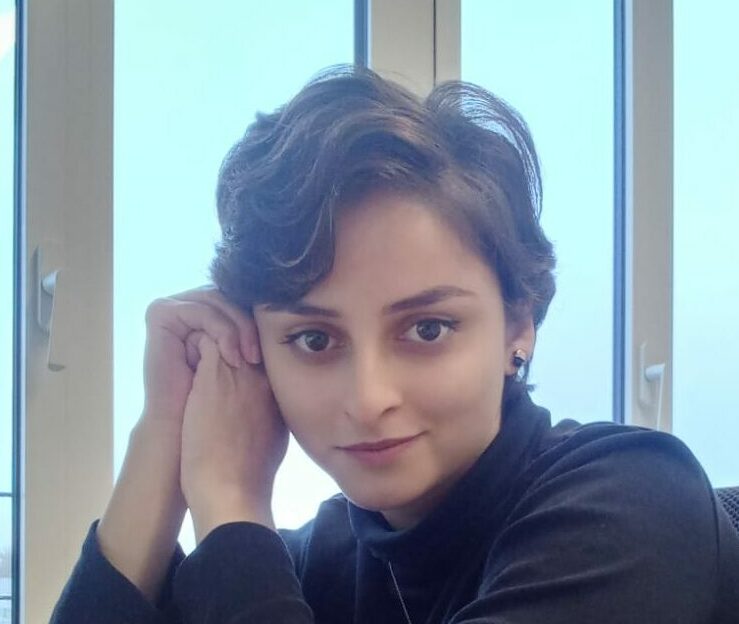
Faezeh RABBANI
Ingénieur d’études
Fani KOUKOULI
PostDoc
Education
- 2016: PhD in Neuroscience - International Pasteur Paris University Doctoral Program (PPU)/Department of Neuroscience, Sorbonne University (UPMC, Ed3C), Paris, France.
- 2011: Master’s in biotechnology/Molecular Diagnosis, Aristotle University of Thessaloniki, School of Pharmacy, Thessaloniki, Greece
- 2009: Doctor of Pharmacy, Aristotle University of Thessaloniki, School of Pharmacy, Thessaloniki, Greece
Biography
I graduated as a Doctor of Pharmacy from the Aristotle University of Thessaloniki, where I then got a Master of Science in Biotechnology and Molecular Diagnosis specializing in neurodegenerative diseases. In 2012, I was admitted with a fellowship to the Pasteur Paris University International Doctoral Program (PPU) in the Integrative Neurobiology of Cholinergic Systems laboratory. During my PhD, I investigated the role of the nicotinic acetylcholine receptors in prefrontal cortex spontaneous neuronal activity, and I identified how a human polymorphism linked to nicotine addiction and schizophrenia contributes to reduced brain activity (Koukouli et al. Nature Medicine 2017). During a first post-doctoral training at the Pasteur Institute, I focused on the impairments of the functional neuronal activity in Alzheimer’s disease and showed that distinct nicotinic receptors are an early target of the amyloid beta peptide. Since 2019, I am a senior post-doc at the Paris Brain Institute (ICM) in the team “Cellular physiology of cortical microcircuits”. My research focuses on the role of an elusive inhibitory neuron type, cannabinoid receptor type 1 interneurons, in primary and secondary cortices and their role in locomotion and visual processing (Koukouli, Montmerle et al. Cell Reports 2022). For my projects, I am performing in vivo two-photon calcium imaging in awake mice and slice electrophysiology techniques. For my research, I received the thesis award “Gandy” specializing in Science of the Chancellery of the Sorbonne Universities of Paris in 2017, the Biomedical Science Research award UNAFAM 2017 from the French Ministry of Health in Paris, the L’Oréal-UNESCO for Women in Science award in 2017 and recently the Young Scientists Prize 2020 of the Fondation des Treilles.Permanent Researchers
- Laurence Cathala (Sorbonne Univ.) – Presently at Univ. of Colorado
Postdocs
- Silvia Marinelli (when @EBRI, Rome, Italy)
- Pablo Mendez (when @EBRI, Rome, Italy)
- Frédéric Manseau (when @EBRI, Rome, Italy)
- Antonio Pazienti (when @EBRI, Rome, Italy)
- Geeske van Woerden
- Carolina Cabezas
- Camille Allene
- Charlotte Deleuze
- Fani Koukouli
- Javier Zorrilla de San Martin
- Angela Michela De Stasi
Ph.D. students
- Simone Pacioni (when @EBRI, Rome, Italy)
- Sofia Baptista (Univ. Coimbra, Portugal)
- Giulia Faini
- Martin Montmerle
- Cristina Donato
- Lucie Gallet
- Angelo Molinaro (visiting, Univ. Firenze, Italy)
Undergraduate students
- Matthieu Trigano (M1)
- Jérémy Peixoto (M2)
- Aloys Mercier (M2)
- Salomé Guez (M2)
- Valerija Kello (M2)
- Vikash Choudhary (M1 & M2)
- Mariama Aboudou (M1)
- Hippolyte Dreyfus (M1)
- Clara Bouttier (M1)
- Elsa Prigent (L1)
Technical staff and engineers
- Simone Pacioni (when @EBRI, Rome, Italy)
- Rosalba Tafi (when @EBRI, Rome, Italy)
- Caroline Mailhes
- Emmanuelle Berthaux
Postdocs
- Silvia Marinelli (when @EBRI, Rome, Italy)
- Pablo Mendez (when @EBRI, Rome, Italy)
- Frédéric Manseau (when @EBRI, Rome, Italy)
- Antonio Pazienti (when @EBRI, Rome, Italy)
- Geeske van Woerden
- Carolina Cabezas
- Camille Allene
- Charlotte Deleuze
Ph.D. students
- Simone Pacioni (when @EBRI, Rome, Italy)
- Sofia Baptista (Univ. Coimbra, Portugal)
- Giulia Faini
- Martin Montmerle
- Cristina Donato
- Lucie Gallet
- Angelo Molinaro (visiting, Univ. Firenze, Italy)
Undergraduate students
- Matthieu Trigano (M1)
- Jérémy Peixoto (M2)
- Aloys Mercier (M2)
- Salomé Guez (M2)
- Valerija Kello (M2)
- Vikash Choudhary (M1 & M2)
- Mariama Aboudou (M1)
- Hippolyte Dreyfus (M1)
- Clara Bouttier (M1)
- Elsa Prigent (L1)
Technical staff and engineers
- Simone Pacioni (when @EBRI, Rome, Italy)
- Rosalba Tafi (when @EBRI, Rome, Italy)
- Caroline Mailhes
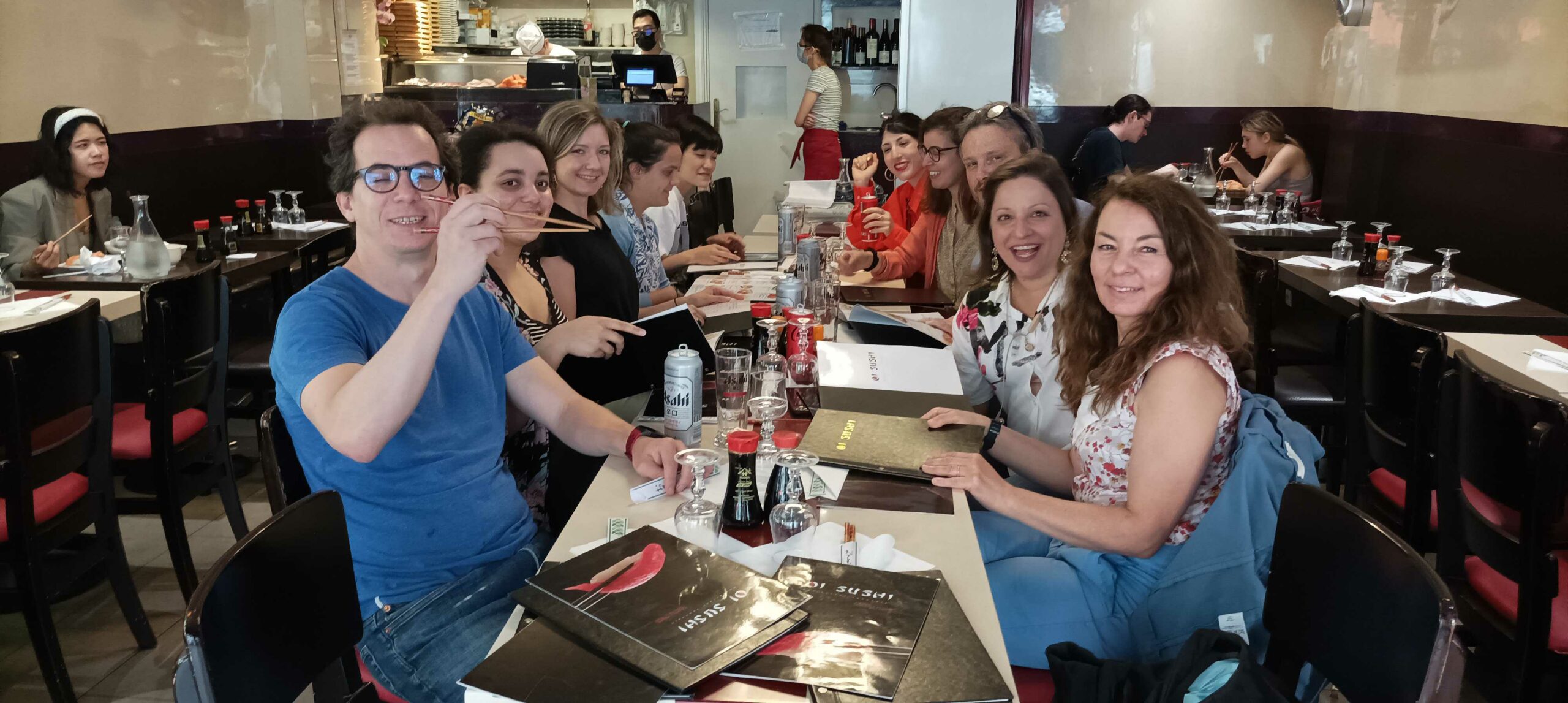
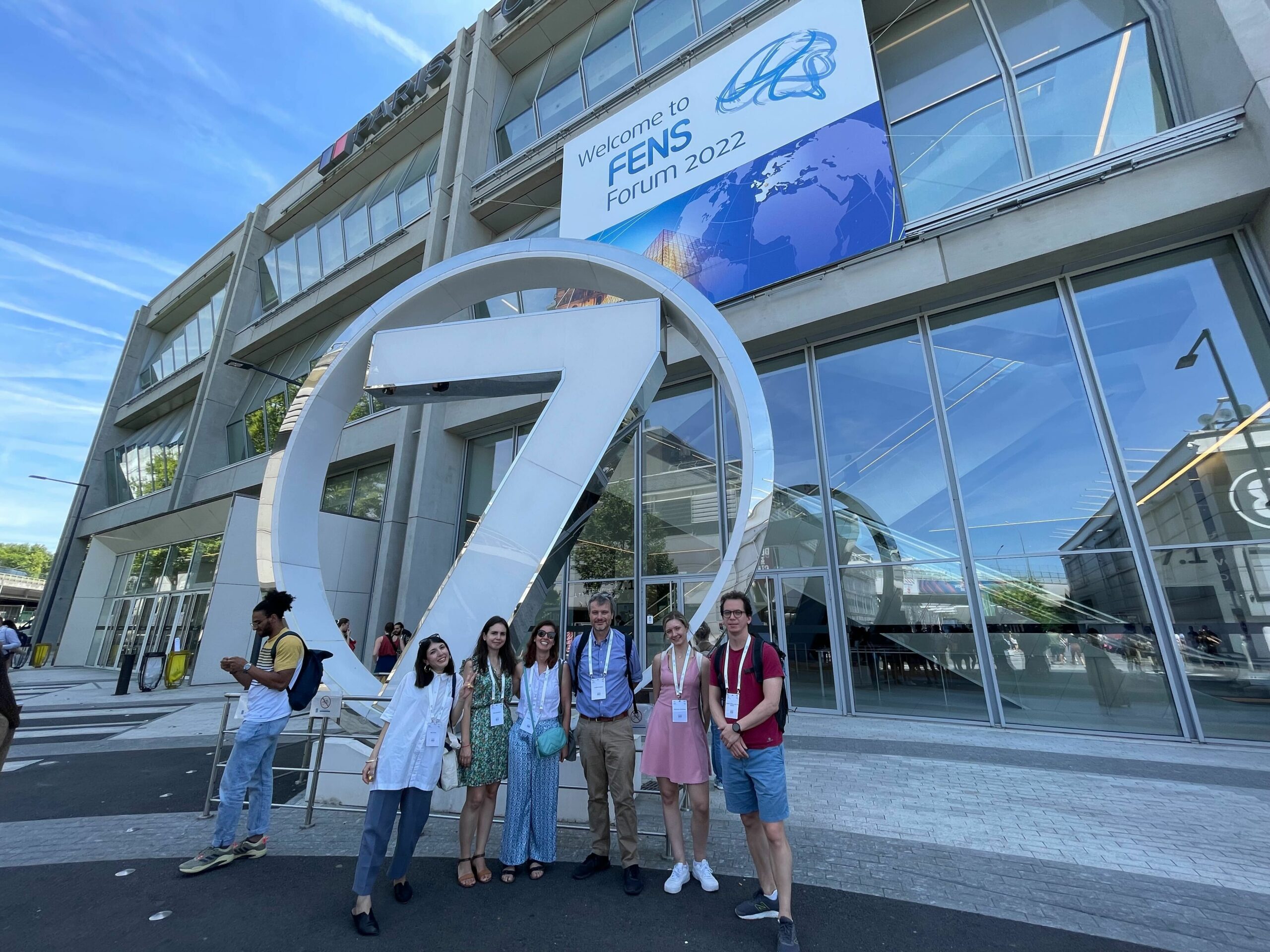
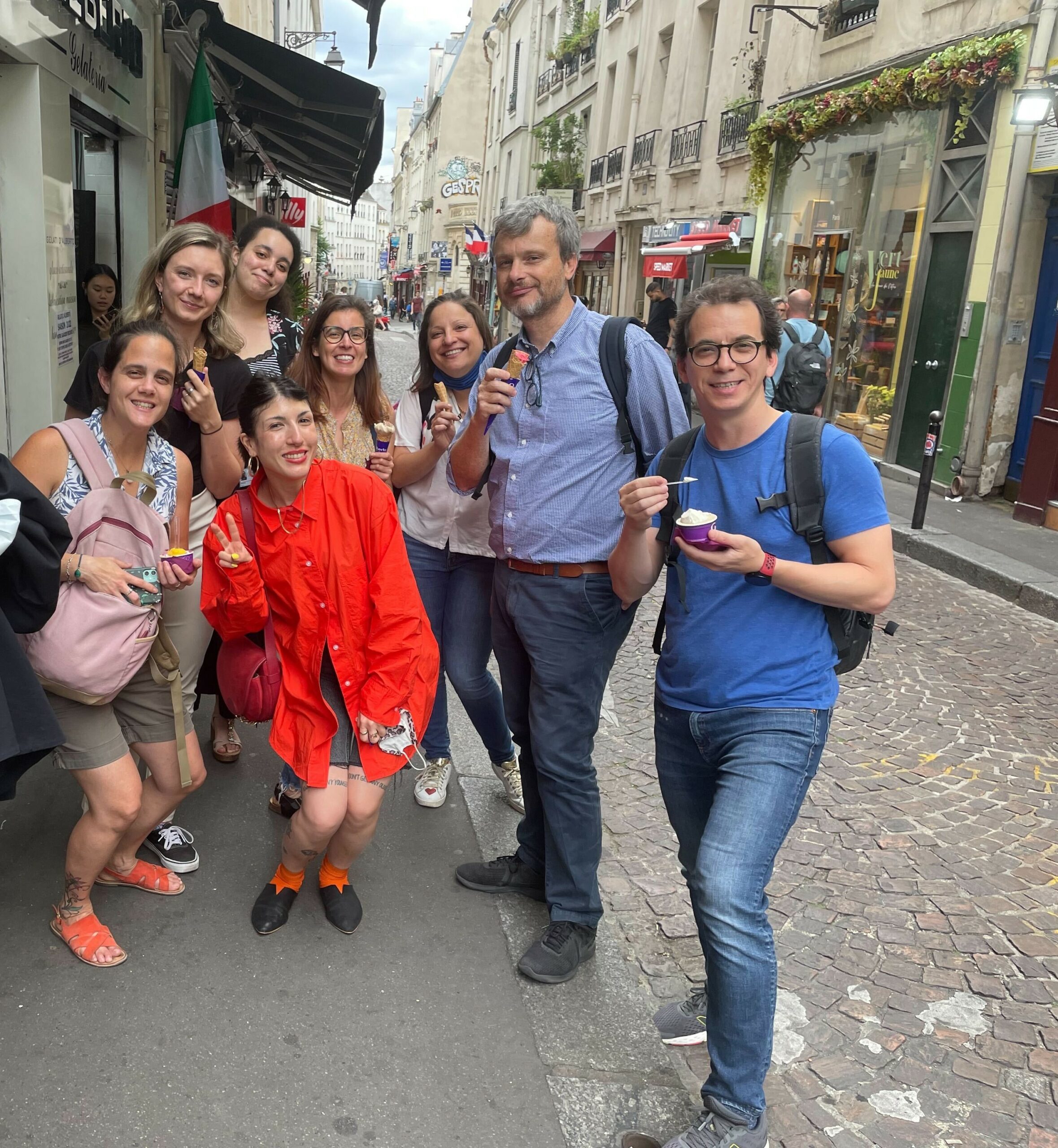

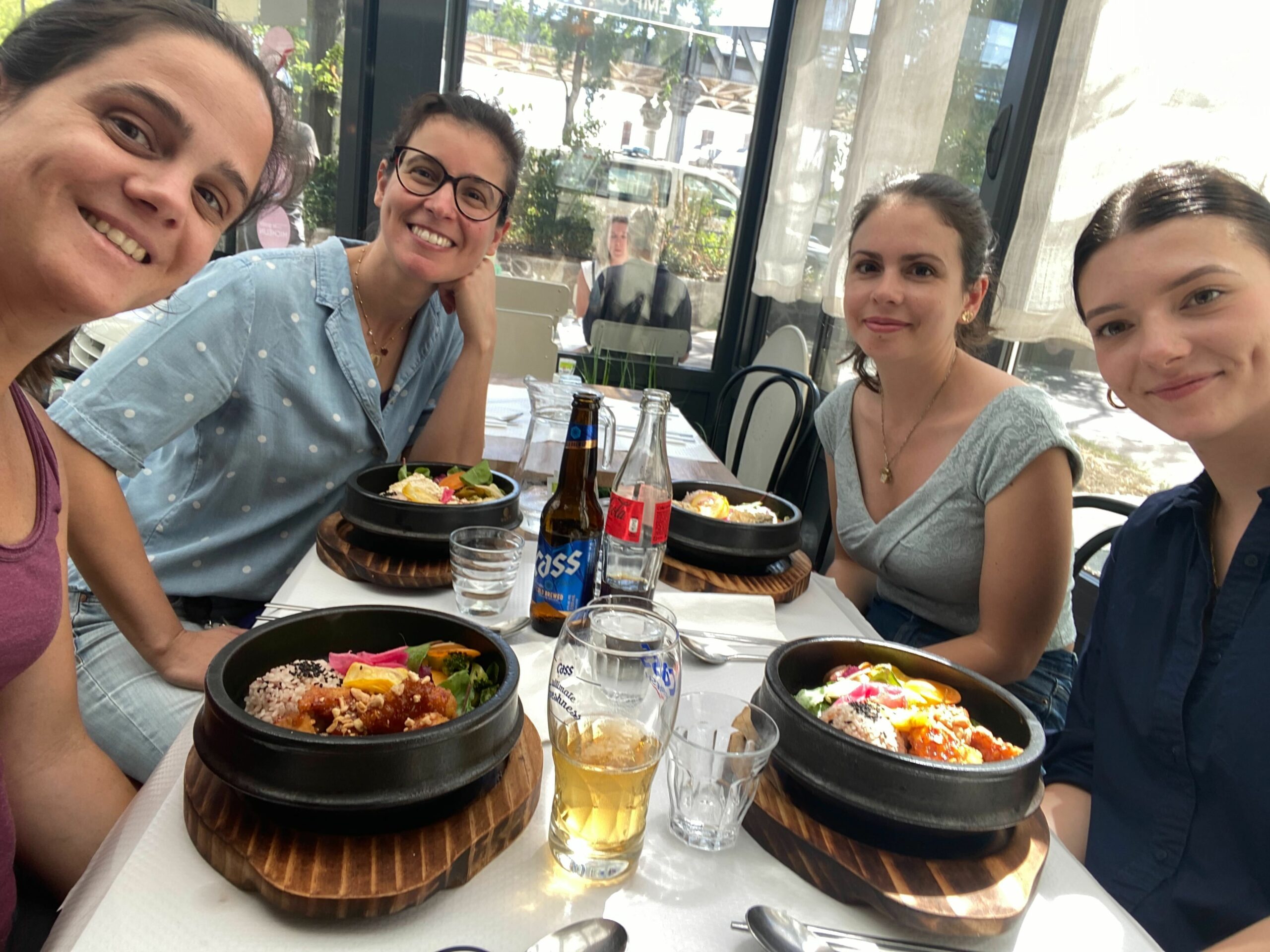
● Postdoctoral fellow #1




